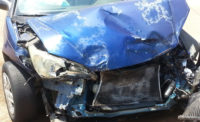According to OSHA, employers are responsible for the safe condition of tools and equipment used by employees, but employees bear the responsibility for properly using and maintaining those tools. As a safety manager, it’s your job to ensure that workers understand how to safely use and maintain hazardous tools. When it comes to utility knives, help them to heed the following tips from the experts:
Use
Pick the right tool for the job at hand.
Always inspect tools before use.
Knives must be sharp. Dull blades require increased force which, in turn, increases the risk of injury.
Use proper personal protective equipment, such as safety goggles to protect the eyes if a blade breaks, and cut-resistant hand and arm protection (at least Level 3).
Keep floors as clean and dry as possible to prevent accidental slips with or around dangerous tools.
Hand a utility knife to a co-worker with the handle first.
Advances in technology have significantly increased tool safety. Use newer model safety knives, which offer features such as self-retracting blades and ergonomic designs.
If the application allows, consider using a rounded tip blade.
Make sure blades are properly positioned in the handle before use.
Keep your non-cutting hand and other body parts out of the cutting path.
Make sure the area around you is clear before cutting.
Always cut away from your body and away from other people.
Hold a knife by the handle with a firm grip. While cutting, don’t ever press on the back of the blade.
Don’t apply too much pressure on the blade.
Don’t use utility knives to pry objects loose.
Don’t use disposable knives with breakaway blades. They are not meant for industrial use.
Don’t get distracted while cutting.
Don’t try to catch a knife that slips from your hand.
Don’t use a knife to cut anything that will dull or break the blade.
Maintenance and care
Dispose of dull or broken blades in a puncture-resistant container.
Follow manufacturer’s instructions when changing blades.
Use proper blade sizes and replace defective retraction mechanisms.
Never leave knives near the edge of a table or counter.
Keep knives clean, dry and sharp.
Don’t store knives with the cutting edge exposed.
Return knives to their proper storage place when you are done using them.
Sources
OSHA, Hand and Power Tools, Construction Safety and Health Outreach Program. http://www.osha.gov/doc/outreachtraining/htmlfiles/tools.html
SafetyToolboxTalks, Free Safety Resource Exchange for Safety Professionals. http://safetytoolboxtopics.com/toolbox-talks-mainmenu-2/29-small-tools/326-utility-knife-safety
HSE Information Sheet. How to reduce your hand knife injuries.http://www.hse.gov.uk/pubns/pps12.pdf




